-
How does it feel?
Celery seed has a pungent, aromatic taste profile much like other spices. As a digestive tonic, celery seeds soothe and settles throughout the gastrointestinal tract.
-
What can I use it for?
Celery seeds contain a pungent volatile oil known as apiol which is a phenolic ether. Apiol is an effective urinary antiseptic and diuretic. It is valuable in the treatment of any urinary or kidney based infections and will target the root cause of the infection in addition to encouraging diuresis and expulsion of any congested toxicity through the urine. Apiole is also effective in treating muscular spasms, such as those associated with menstrual cramping and pain common in musculoskeletal conditions.
-
Into the heart of celery seeds
Celery seeds are classically used throughout western and eastern medical traditions as an effective diuretic. Ajmoda encourages diuresis and helps to relieve excess inflammation and water retention commonly associated with musculoskeletal conditions.

Due to the antispasmodic and antimicrobial properties of the pungent volatile oil, apiole, it is also effective for muscular cramping and pain that may be associated with an infection.
The combination of antimicrobial and diuretic properties makes ajmoda excellent at encouraging the body to expel congested toxins and wastes, making it an effective whole body cleanser.
The pungency of apiole also encourages dilation of the blood vessels and the bronchioles in the respiratory system, having a positive long-term effect on chronic conditions of the lungs.
Ajmoda is indicated in asthma, bronchitis, cough and sinus congestion. It actively helps to dilate the bronchioles by preventing spasm in the airways and encourage the removal of congested mucous.
Ajmoda is indicated in flatulence, borborygmus and intestinal cramps as apiole will stimulate the digestive metabolism and encourages the natural movement of digestion downwards.
Ajmoda will help relieve spasms, cramps and muscular tension. It directly regulates the tension versus relaxation balance in the smooth muscles and can benefit heart pain caused by nervous constriction. As an anti-spasmodic with an affinity for the lower abdomen it can also help ease the pain of dysmenorrhoea and menstrual cramps.
Ajmoda seed is a specific herb for treating kidney and bladder discomfort from cold; frequent, pale urine with lower back ache and nocturia. The vegetable ‘stalk’ heals the urinary system afflicted with problems from heat, such as urinary irritation, cystitis, pain and frequent, dark urination with burning.
-
Traditional actions
Herbal actions describe therapeutic changes that occur in the body in response to taking a herb. These actions are used to express how a herb physiologically influences cells, tissues, organs or systems. Clinical observations are traditionally what have defined these actions: an increase in urine output, diuretic; improved wound healing, vulnerary; or a reduction in fever, antipyretic. These descriptors too have become a means to group herbs by their effects on the body — herbs with a nervine action have become the nervines, herbs with a bitter action are the bitters. Recognising herbs as members of these groups provides a preliminary familiarity with their mechanisms from which to then develop an understanding of their affinities and nuance and discern their clinical significance.
-
Traditional energetic actions
Herbal energetics are the descriptions Herbalists have given to plants, mushrooms, lichens, foods, and some minerals based on the direct experience of how they taste, feel, and work in the body. All traditional health systems use these principles to explain how the environment we live in and absorb, impacts our health. Find out more about traditional energetic actions in our article “An introduction to herbal energetics“.
Western energetics
-
Did you know?
Celery grows in dry soil; according to the ‘doctrine of signatures’ this indicates its ability to oppose moisture and absorb damp and mucus-based conditions.
Additional information
-
Botanical description
Celery originated from the Mediterranean but is now cultivated across the world, primarily as a food crop. The plants have distinctive creamy white and green umbels of flowers and its leaves form tall upright rosettes that can reach up to 1m in height. The celery stalks are characteristically succulent and rigid; it is this part of the plant that is used for culinary purposes. It is the celery seeds that are collected for use as a medicinal herb.
-
Common names
- Celery
- Ajmoda
- Krafis
- Sellerie (Ger.)
- Apio (Sp.)
- Han-ch’in (Chi.)
-
Safety
No Concentrated celery seeds are not recommended for pregnant women due to its uterine stimulating properties. Celery seed should be avoided if there is a history of kidney issues. It can also potentially interact with thyroid medications, diuretics, blood thinning medications, sedatives, and lithium as drug excretion can be enhanced by celery’s diuretic properties making medications less effective.
-
Dosage
250mg–5g/day or 3–15ml of a 1:3 at 60% tincture

-
Habitat
Celery seed is native to temperate Mediterranean climates in Europe, Asia and Africa. It grows in ditches, by rivers and in other damp locations, especially near the sea in salt marshes.
-
Sustainability
According to the IUCN Red List of Threatened Plants, celery seed is classed as ‘Least Concern’ as it is widespread with stable populations and does not face any major threats.
Habitat loss and over harvesting from the wild are two of the biggest threats faced by medicinal plant species. There are an increasing number of well known herbal medicines at risk of extinction. We must therefore ensure that we source our medicines with sustainability in mind.
The herb supplement industry is growing at a rapid rate and until recent years a vast majority of medicinal plant produce in global trade was of unknown origin. There are some very real and urgent issues surrounding sustainability in the herb industry. These include environmental factors that affect the medicinal viability of herbs, the safety of the habitats that they are taken from, as well as the welfare of workers in the trade.
The botanical supply chain efforts for improved visibility (transparency and traceability) into verifiably sustainable production sites around the world is now certificated through the emergence of credible international voluntary sustainability standards (VSS). Read our article on sustainable sourcing of herbs to learn more about what to look for and questions to ask suppliers about sustainability.
-
Quality control
Herbal Medicines are often extremely safe to take, however it is important to buy herbal medicines from a reputed supplier. Sometimes herbs bought from unreputable sources are contaminated, adulterated or substituted with incorrect plant matter.
Some important markers for quality to look for would be to look for certified organic labelling, ensuring that the correct scientific/botanical name is used and that suppliers can provide information about the source of ingredients used in the product.
A supplier should be able to tell you where the herbs have come from. There is more space for contamination and adulteration when the supply chain is unknown.
-
How to grow
 Sow between mid-March and early April in seed trays with small individual cells. The resulting seedlings can be transplanted with minimal root disturbance. Cover the seeds with the most minimal amount of vermiculite or soil possible.
Sow between mid-March and early April in seed trays with small individual cells. The resulting seedlings can be transplanted with minimal root disturbance. Cover the seeds with the most minimal amount of vermiculite or soil possible.Transplant the young seedlings when large enough to handle, which might not be until several true leaves appear (true leaves are the leaves that grow after the cotyledons which are the first leaves to appear from a germinating seed). Small 3 inch pots or modules are best for this.
Low temperatures after germination can cause bolting. So, it is best to keep the temperature above 10 degrees in these early stages.
Ensure the plants are well hardened off before planting out at the end of May to early June.
Dig a trench around 38-50cm wide and 30 cm deep in October/November or March, incorporating plenty of well-rotted organic matter. Plant the seedlings along the line of the trench.
Once stems are 30cm tall, the plants can be then earthed up around the base of the stem. Mound up the soil approximately 3 inches at a time until the top is exposed.
Water regularly before the onset of dry weather – plants should never be allowed to dry out. Feed fortnightly with a balanced liquid general fertiliser during the summer.
Celery is ready to harvest between August and October once it reaches the desired size, and before the first hard frost.
Most types of celery will be damaged by frost, but varieties of trench celery (which are grown in trenches and earthed up) might last into winter, as late as December.
-
Recipe
Digestive detox tea
This detoxifying blend of tasty seeds and roots will help to regulate digestion, banish sluggishness and cleanse the blood.

Ingredients:
- Aniseed 4g
- Fennel seed 4g
- Cardamom pod 3g
- Dandelion root 2g
- Licorice root 1g
- Celery seed 1g
- Lemon a twist per cup
This will serve 2 cups detoxifying tea with a citrus twist.
Method:
- Put all of the ingredients in a pot (except for the lemon juice).
- Add 500ml/18fl oz freshly boiled filtered water.
- Leave to steep for 10–15 minutes, then strain.
- Enjoy with a twist of lemon in each cup.
Joint protector tea
It’s almost an inevitable human condition that we will suffer from some sort of joint pain as we get older. All that wear-and-tear through our life can catch up with us but we have a herbal tea recipe that will help keep the red-hot inflammation of arthritis and gout at bay.

Ingredients:
- Turmeric root powder 3g
- Boswellia resin 2g
- Ginger root powder 2g
- Celery seed 2g
- Ashwagandha root 1g
- Licorice root 1g
- Meadowsweet leaf 1g
- Honey to taste
This will serve 2–3 cups of ache-free tea.
Method:
- Put all of the ingredients (except for the meadowsweet leaf and honey) in a saucepan with 600ml (21fl oz) cold filtered water. Cover with a lid and simmer for 15 minutes.
- Take off the heat and add the meadowsweet leaf.
- Leave to steep for 10 minutes, strain and add some honey to taste.
Recipes from Cleanse, Nurture, Restore by Sebastian Pole

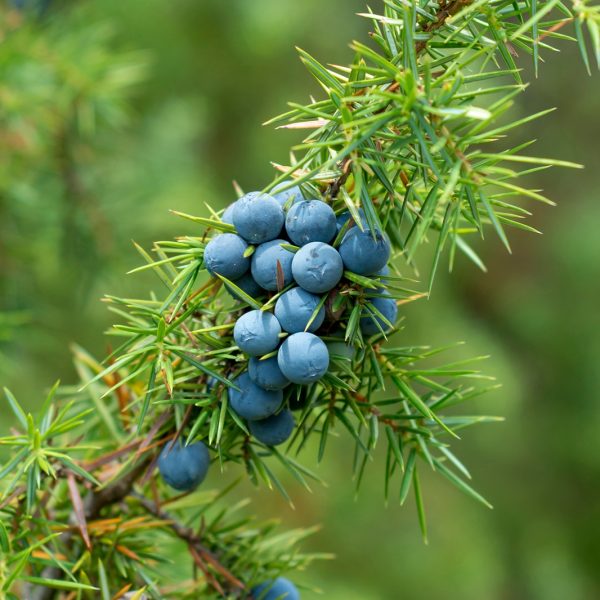













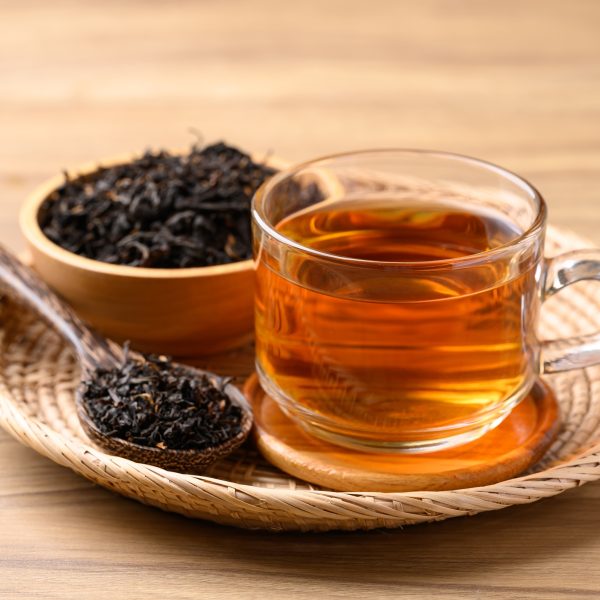
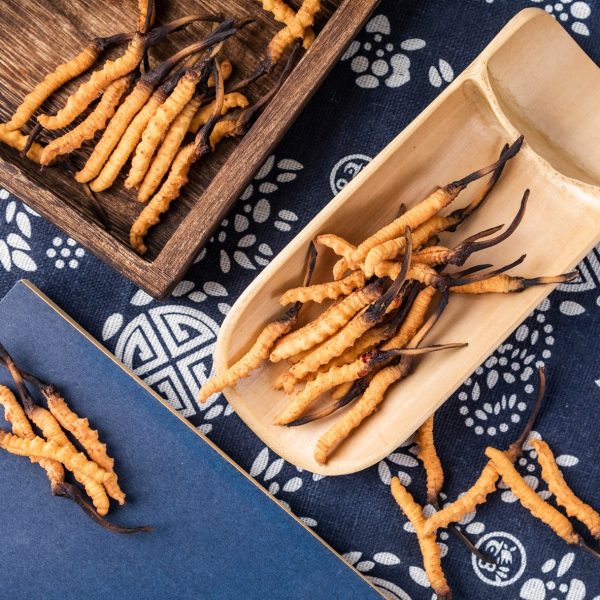
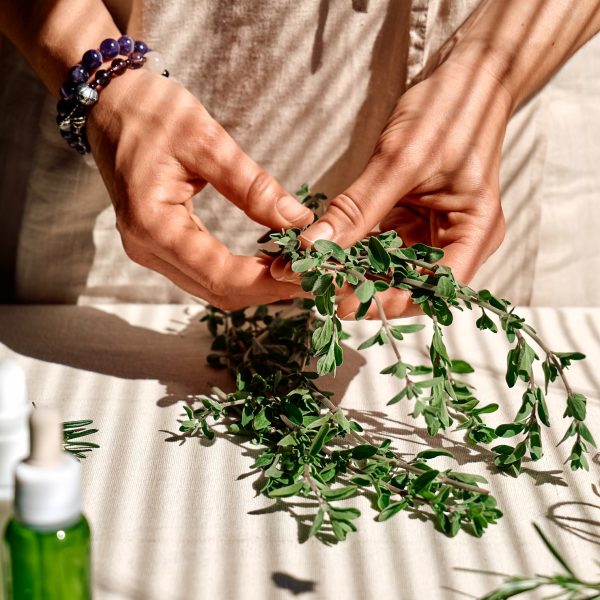










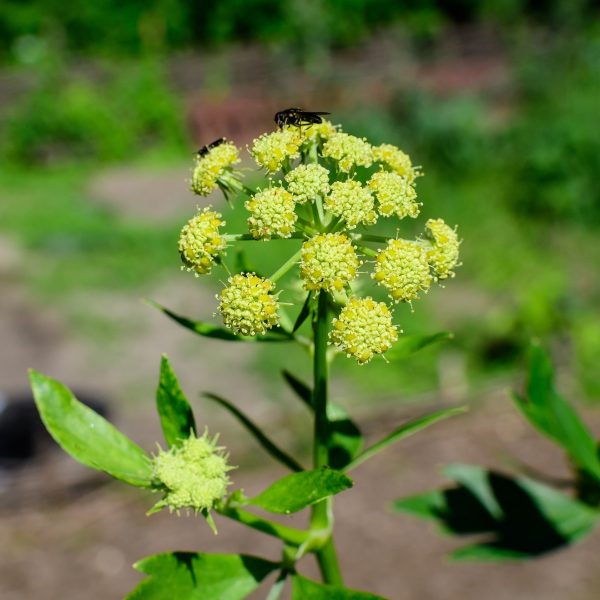

 Sow between mid-March and early April in seed trays with s
Sow between mid-March and early April in seed trays with s







